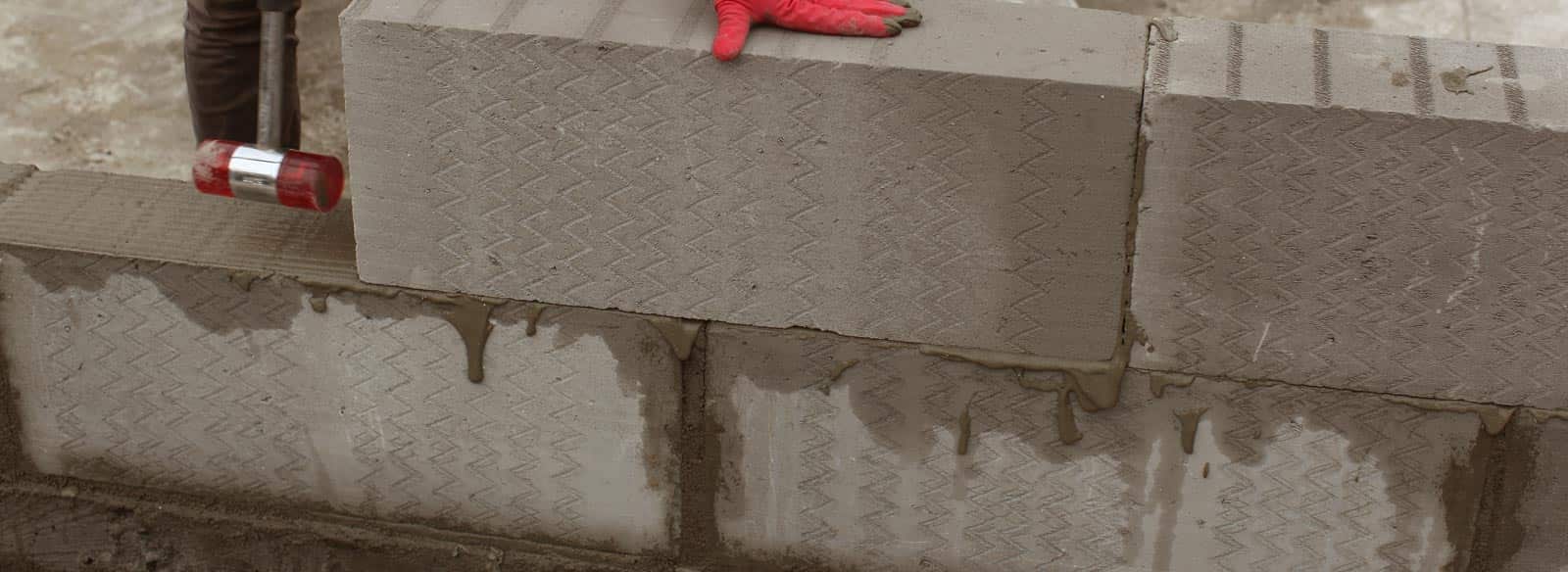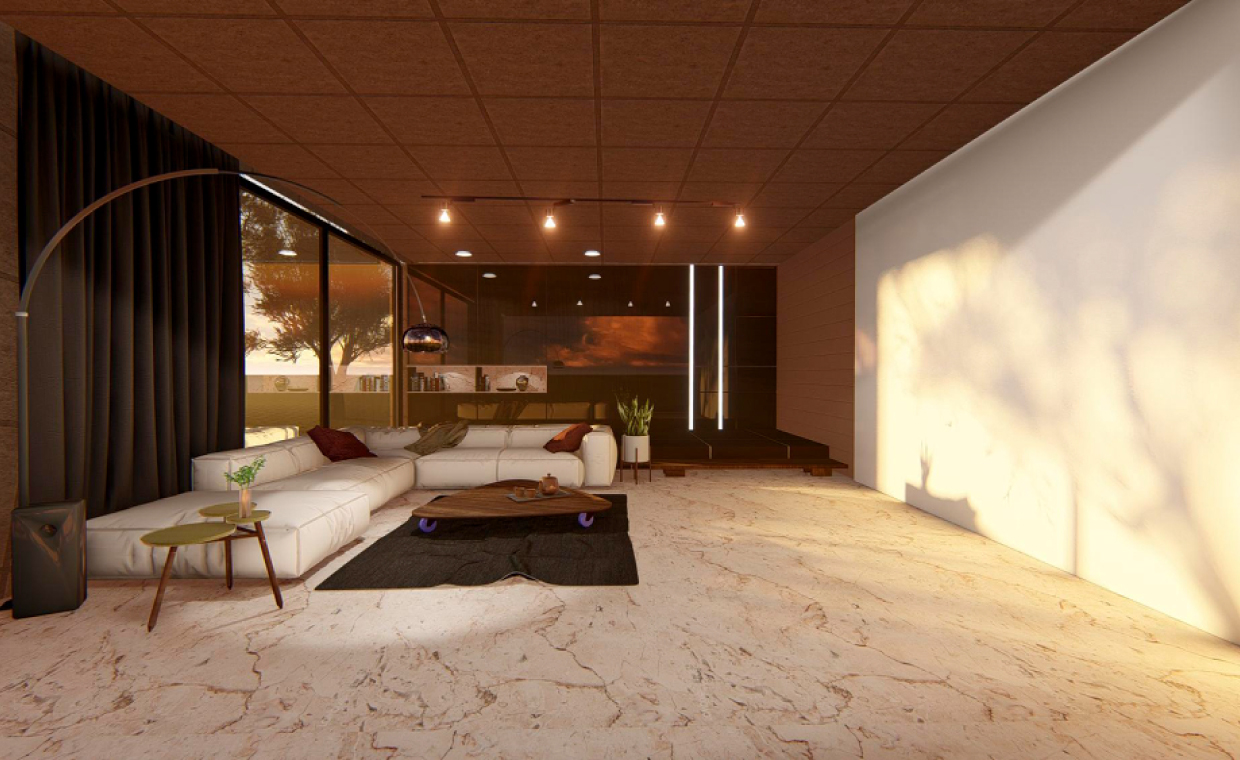
In most of the residential structures, nowadays AAC blocks are used as wall units, due to many of its advantages. They are lightweight blocks which are easy to handle and are sustainable. AAC blocks have good thermal insulation and use fly ash in the production. Thus they are listed in the list of eco friendly or green building materials.
For masonry construction cement sand mortar is used since many decades. But the use of conventional mortar with recently invented AAC blocks has lead to low construction quality, due to their mismatched properties. The cement mortar is heavier to bond with AAC blocks and also does not have thermal insulation properties, which leads to less thermal insulation when the whole masonry is considered.
Hence, special adhesives have been formulated to match the properties of AAC blocks. This AAC block adhesive has more advantages over conventional cement mortar when used with AAC block. There arises confusion among contractors and homeowners as to which is cost effective; AAC block adhesive or mortar? Here we have given the advantages of AAC block adhesive and its cost comparison with conventional cement sand mortar, to help you make a right choice.
AAC Block Adhesive
Adhesive for AAC blocks are specially formulated adhesives made from cement, lime, sand and specialized polymers. Some companies also use fly ash in the formulation. These adhesives replace the 8-12 mm thickness of mortar to just 3-4 mm. There are many advantages when compared with conventional cement sand mortar.
Advantages of AAC Block Adhesive
01. Thin Joints:
Only 3-4 mm of adhesive is sufficient to join AAC blocks as compared to cement sand mortar, which takes 8-12 mm thick mortar joints. Hence the jointing material is reduced by 75%.
02. Less Material Required:
There is less volume of adhesive consumed for the same wall, when compared with cement mortar. Hence, less material is required for joining AAC blocks. Also the joints are thin in case of AAC block adhesive. This leads to reduction in storage space of the material, fewer labours to handle and also reduced cost of transportation.
03. Speedy Construction:
AAC block adhesive is a ready-mix material and only water is to be added in it for application. While in case of cement sand mortar, the raw materials are to be correctly proportioned and then mixed carefully to obtain the paste, which is time consuming.
04. Saves Water:
The adhesives are formulated such that they are self curing. No water is needed for curing the adhesive, and hence they help in saving water as well as money.

Courtesy – Behtam
05. Cleanliness on Site:
In case of conventional mortar, due to mixing on site and curing, the cleanliness of site is not maintained. While AAC block adhesive comes in premix form, and is to be mixed with water only. Due to this and its self-curing nature, the cleanliness of site is maintained.
06. Minimum Process Time:
As no curing is to be done, the masonry wall is ready in just 24 hours. While in case of cement sand mortar, curing is done for 7 days.
07. Dry Material is Available throughout the Year:
AAC block adhesive is available in dry form throughout the year, which may not be the case of mortar. Sometimes moist sand is available, which has to be dried and then used. This will lead to an increase in the cost of the mortar.
08. Less Wastage:
Cement mortar accounts for 20-30% of wastage during its use. While there is negligible or no waste of AAC block adhesive.
09. Thermal Insulation:
The AAC block adhesive is specially formulated to match the thermal insulation property of AAC blocks. Hence, the whole masonry acts as a thermal barrier which is not the case of cement mortar.
10. Quality Control:
As the adhesives are manufactured in factories under controlled conditions, the quality control measures can be effectively observed and the ultimate product is of superior quality. Cement mortar is prepared on site, and sometimes it is difficult to maintain the quality of mortar as it is being prepared on-site. When mortar is prepared on site, the raw materials cannot be checked for quality. The manufacturers will test the raw materials and then use them in the manufacturing of the adhesives.
Cost Comparison of AAC Block Adhesive and Mortar
Cost of Cement Mortar (1:6):
- Consider size of AAC block as 600 x 200 x 200 mm. Hence the volume of AAC block is:
= 0.600 x 0.200 x 0.200 = 0.0240 cu.mt.
- For joining this AAC block, mortar is to be applied on two surfaces of the blocks. Considering the mortar thickness of 10 mm. Hence the volume of block with mortar is:
= 0.600 x 0.210 x 0.210 = 0.0265 cu.mt.
- Number of AAC blocks with mortar in 1 cu.mt. are:
= 1/0.0265 = 37.7 = 38 blocks
- Total volume of block without mortar:
= 38 x 0.0240 = 0.912 cu.mt.
- Volume of mortar = 1 – 0.912 = 0.088 cu.mt.
- Considering 25% bulking of sand in mortar, final volume of mortar:
= 0.088 + 0.088 x 0.25 = 0.110 cu.mt.
- Total volume of cement required to make the mortar:
= 1 x 0.11 /(1+6) = 0.016 cu. mt.
- Total weight of cement required = 1440 x 0.016 = 23.04 kg.
- Generally, in the market 50 kg bags are available. Thus, cement bags required to make the mortar:
= 23.04/50 = 0.46 Bag.
- Total Volume of sand required to make the mortar
= 6 x 0.016 = 0.096 cu. mt.
- Hence, weight of sand required
= 1600 x 0.096 = 154 kg.
- Generally, in the market 50 kg bags of sand are available. Thus, bags of sand required to make the mortar = 154/50 = 3.08 Bags.
- The average cost of a cement bag is Rupees 310. Hence, cost of cement required:
= 0.46 x 310 = Rupees 143.
- The average cost of sand per bag is Rupees 170. Hence, the cost of sand required:
= 3.08 x 170 = Rupees 524.
- Hence Total Cost of the Cement Mortar to be used in 1 Cu. mt. = 524 + 143 = Rupees 667
Cost of AAC Block Adhesive:
- Consider size of AAC block as 600 x 200 x 200 mm. There are many manufacturers which manufacture AAC block adhesive. They test the product and then distribute it for use. The manufacturers provide the coverage of the adhesive in the technical datasheet of the product. Generally the coverage ranges from 100 – 120 sq.ft./ 40 kg bag.
- Taking the average coverage of 80 sq.ft./ 40 kg, i.e. 7.43 sq. mt./ 40 kg bag.
- Volume of mortar:
= 7.43 x 0.2 = 1.486 Cu.mt./ 40 Kg bag.
- Hence number of bag of adhesive required for 1 Cu. mt. of wall = 0.67 Bag
- The cost of adhesive for AAC block is generally, Rupees 450. Hence, the total cost of adhesive is = 450 x 0.67 = Rupees 301.
Note: Here wastage is not considered if wastage is accounted then the cost would further increase.
Thus from above calculation, the AAC block adhesive is less expensive, i.e. more cost effective. AAC block adhesive has many advantages and is cheaper than conventional mortar. Due to its advantages, the cost of curing, transportation and labour also reduces. Hence, homeowner should consider buying the adhesive while constructing with AAC blocks. There are many manufacturers who make eco-friendly adhesive. Hence such options must be considered.
Also Read:
Comparison of Red Bricks vs AAC Blocks vs Fly Ash Bricks vs Solid Concrete Blocks vs CLC Blocks
Solid Concrete Blocks Vs AAC Blocks: How to Make the Right Choice
Things to Keep in Mind While Buying Bricks
Various Shapes of Brick used in Construction
































